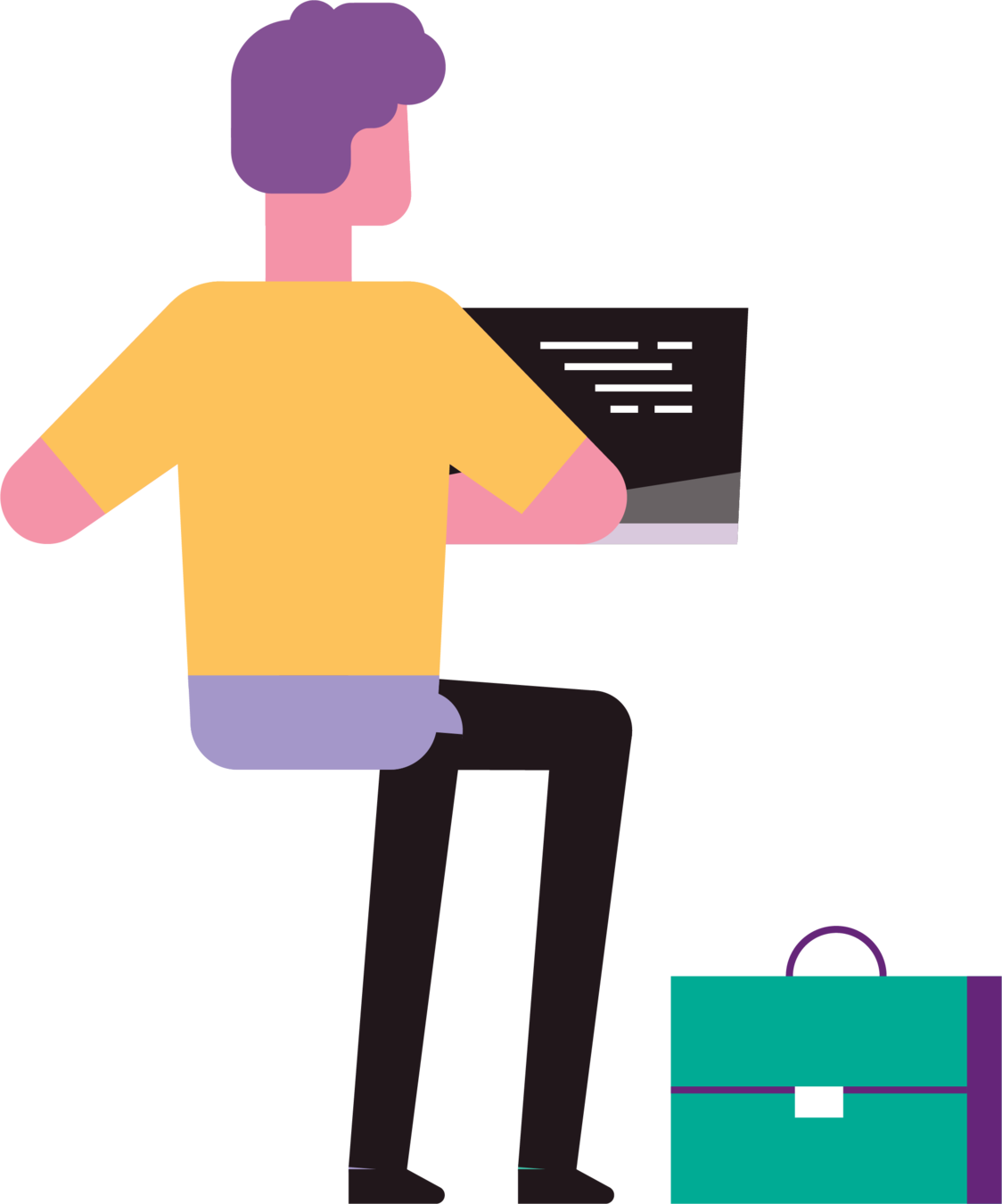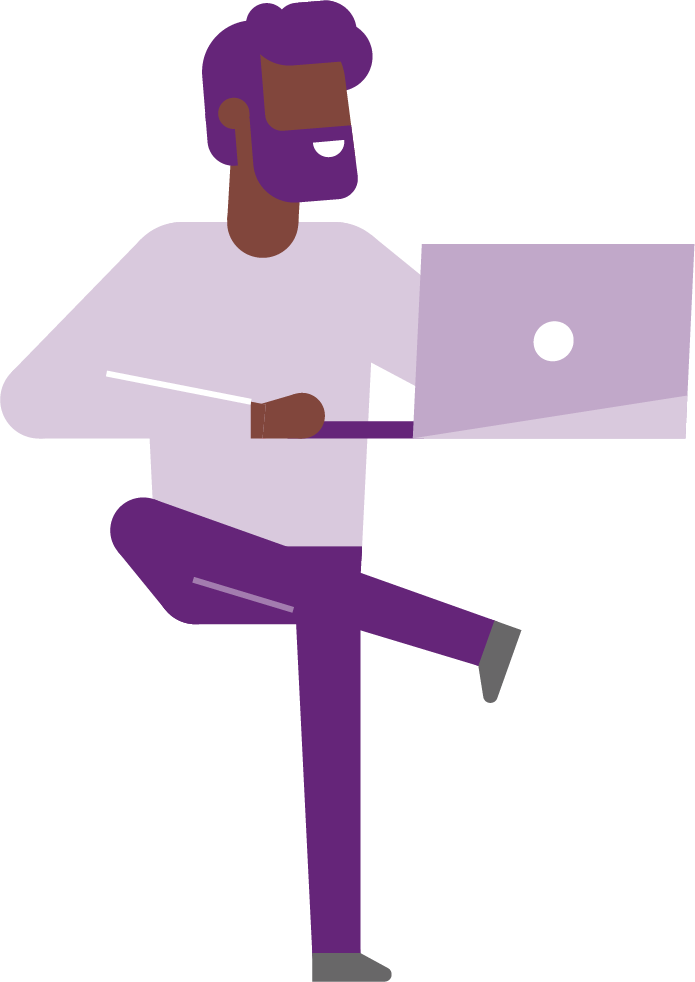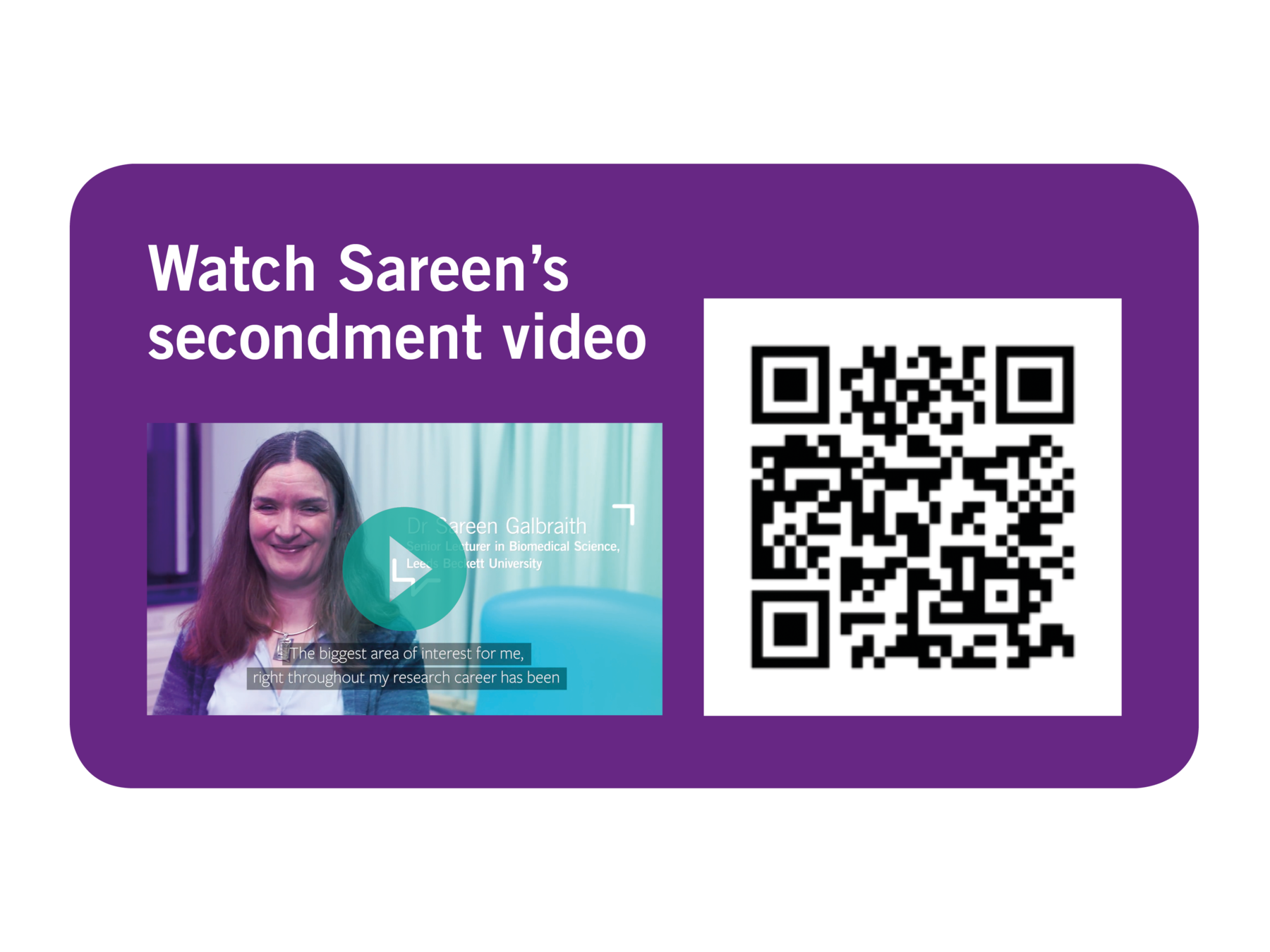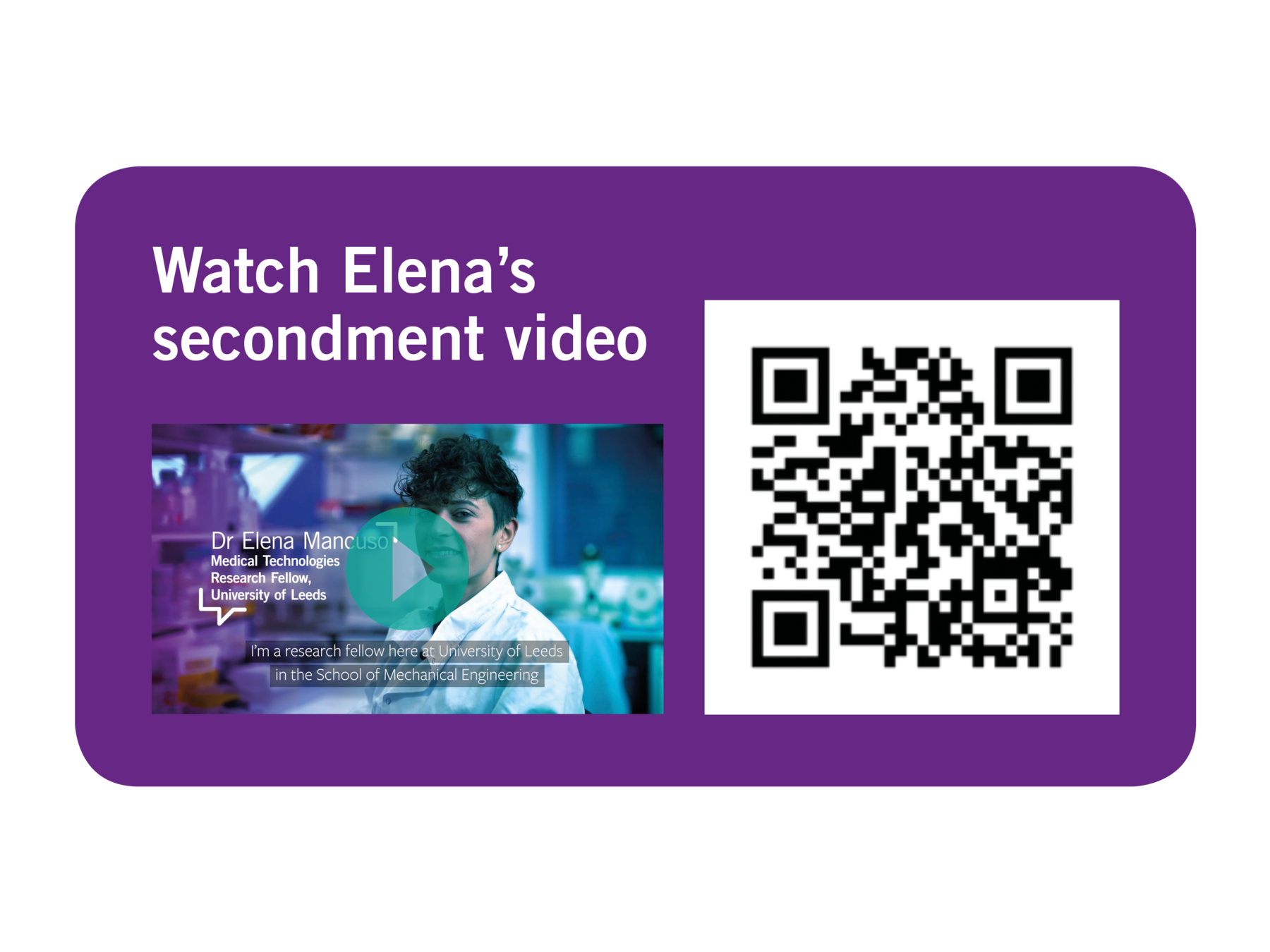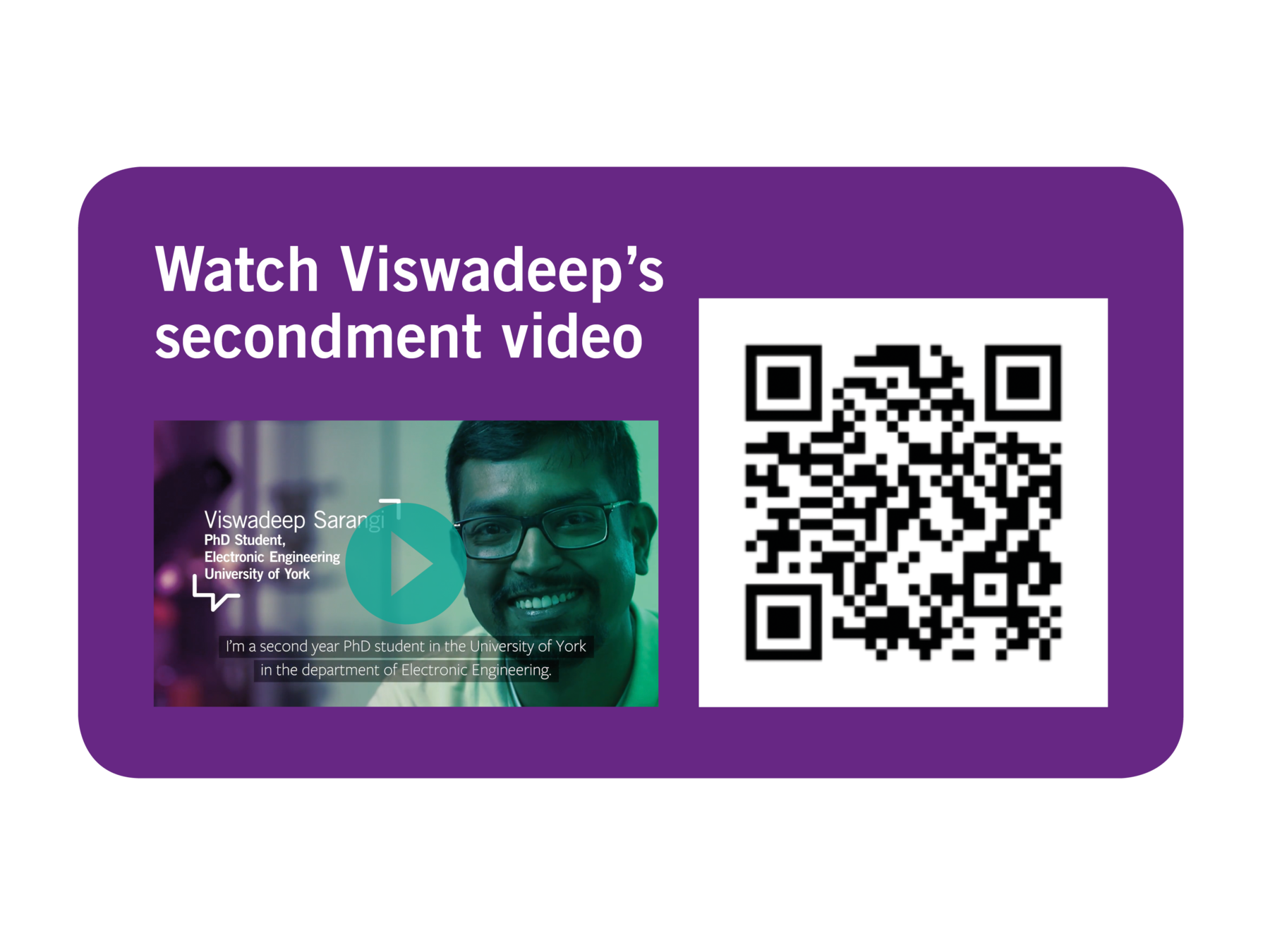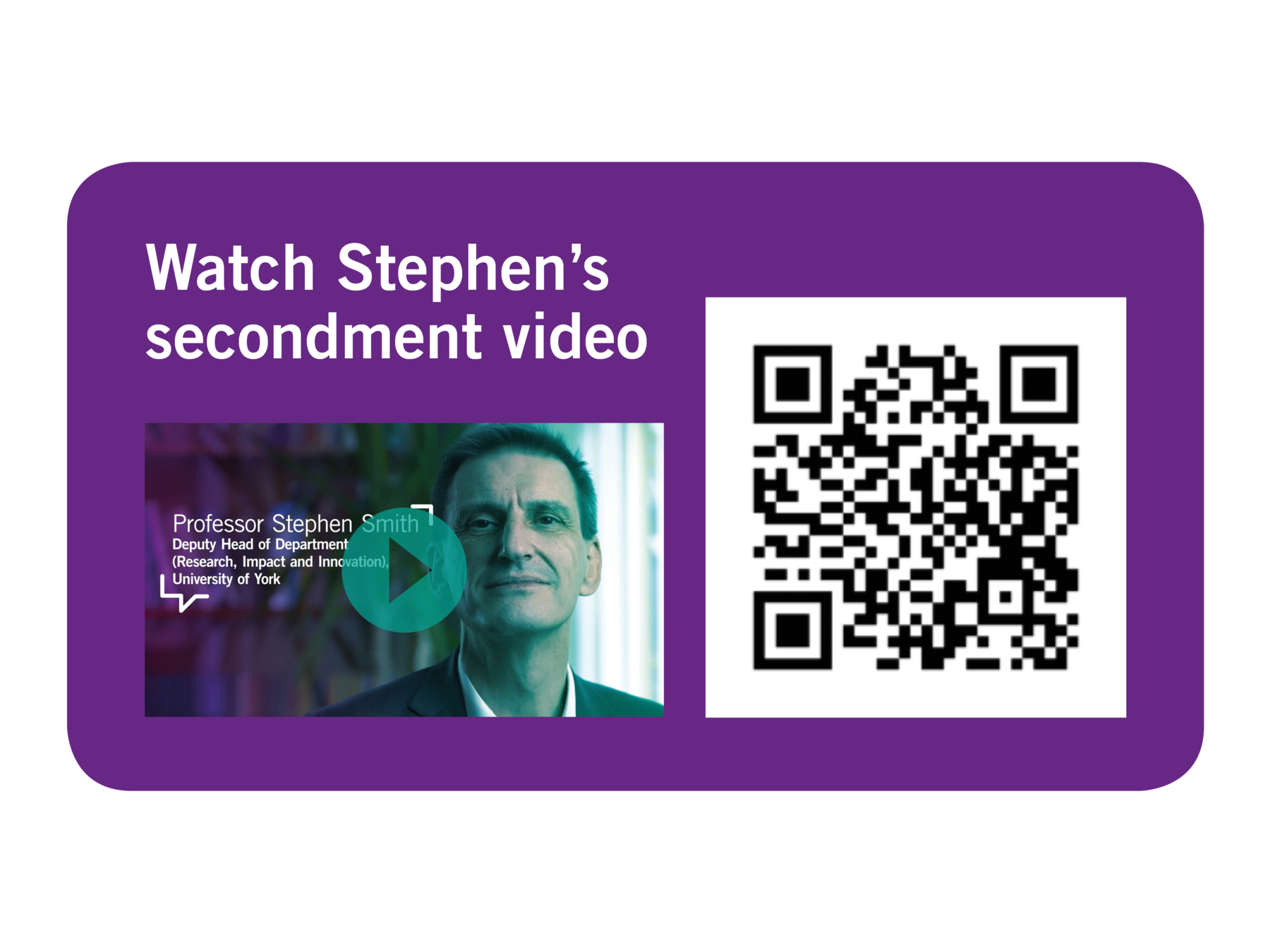



Big innovation, small budget

Running a successful
secondment scheme –
a knowledge exchange
and
practitioner’s guide
Contents


A note to knowledge exchange and technology transfer professionals
Running a successful secondment scheme − good practice guide
Prepare
Publicise
Support
Evaluate
Translate – a successful secondment scheme case study
Dr Sareen Galbraith, Leeds Beckett University
Dr Elena Mancuso, University of Leeds
Viswadeep Sarangi, University of York
Prof Stephen Smith, University of York
The successful secondment scheme toolkit
Acknowledgements
About Translate



A note to knowledge exchange and
technology transfer professionals
As a Knowledge Exchange and Commercialisation (KEC)
practitioner, you translate research outcomes into products and services that have an economic and social impact, often with tight budget constraints. You know that this isn’t always straightforward.
Gaining fresh perspectives and new approaches for research is at the heart of successful innovation.
This guide explains how temporary placement of academic, industrial, clinical and other collaborators on a shorter-term basis, with a small amount of resource, can lead to significant innovation and knowledge exchange outcomes.
The second part of this guide is a case study of a successful secondment scheme, delivered through the HEFCE (now Office for Students) Catalyst-funded programme: Translate.
Since the secondment scheme launch in 2016, Translate has funded 45 secondments with destinations to academia, industry and healthcare settings.

Five reasons for running an innovation secondment scheme:
Low budget
Tight timescale
Progress technologies
Develop people
New collaborations
Running a successful secondment
scheme – good practice guide




Prepare
Publicise
Support
Evaluate
Prepare


1
2
objectives of the scheme
Firstly you need to establish the aims and objectives of the scheme.
The aims of the secondments could:
promote the progression or transfer of technologies
promote business development
promote capability development
The objectives might be to:
• increase knowledge and skills
• establish professional links and collaborations
• develop particular technologies
• identify new lines of research and innovation.
Identify who
can take part
You need to identify the potential pool of participants. Bear in mind that there may be limitations on how your funding can be spent.
Participants could include:
• Students (what level?)
• Postdoctoral researchers
• University research and other staff
• Clinical staff in health care organisations
• Staff in technology businesses
• Staff at innovation enabling/intermediary organisations.
You will also need to identify who will assess the applications.
Your panel might include:
• Academics
• KEC practitioners
• Researcher development professionals
• Industry representatives.


Prepare

3
Allocate the budget
and timeframe
The way that the scheme is delivered will depend on the size of the budget and how you choose to spend it.
1. Approve the total budget and the period it will
be available.
2. Decide how to allocate the budget: lots of small grants,
a few larger ones or a mix of the two.
3. Define the terms of funding:
• what can be paid for e.g. travel, salaries, consumables
• who can receive funding e.g. individuals, educational
organisations, businesses
• period that funds must be spent by.

4
Identify who
can take part
To run a successful secondment scheme you need to consider ‘success’ and how you will measure it. Metrics could include the number of secondments carried out, types of secondments, spread/diversity of participants and outcomes of the secondments.
Tip: Flexibility will be crucial to the success of the scheme.
Think about allowing your participants to take part on a full or
part-time basis, and the opportunity to apply more than once.



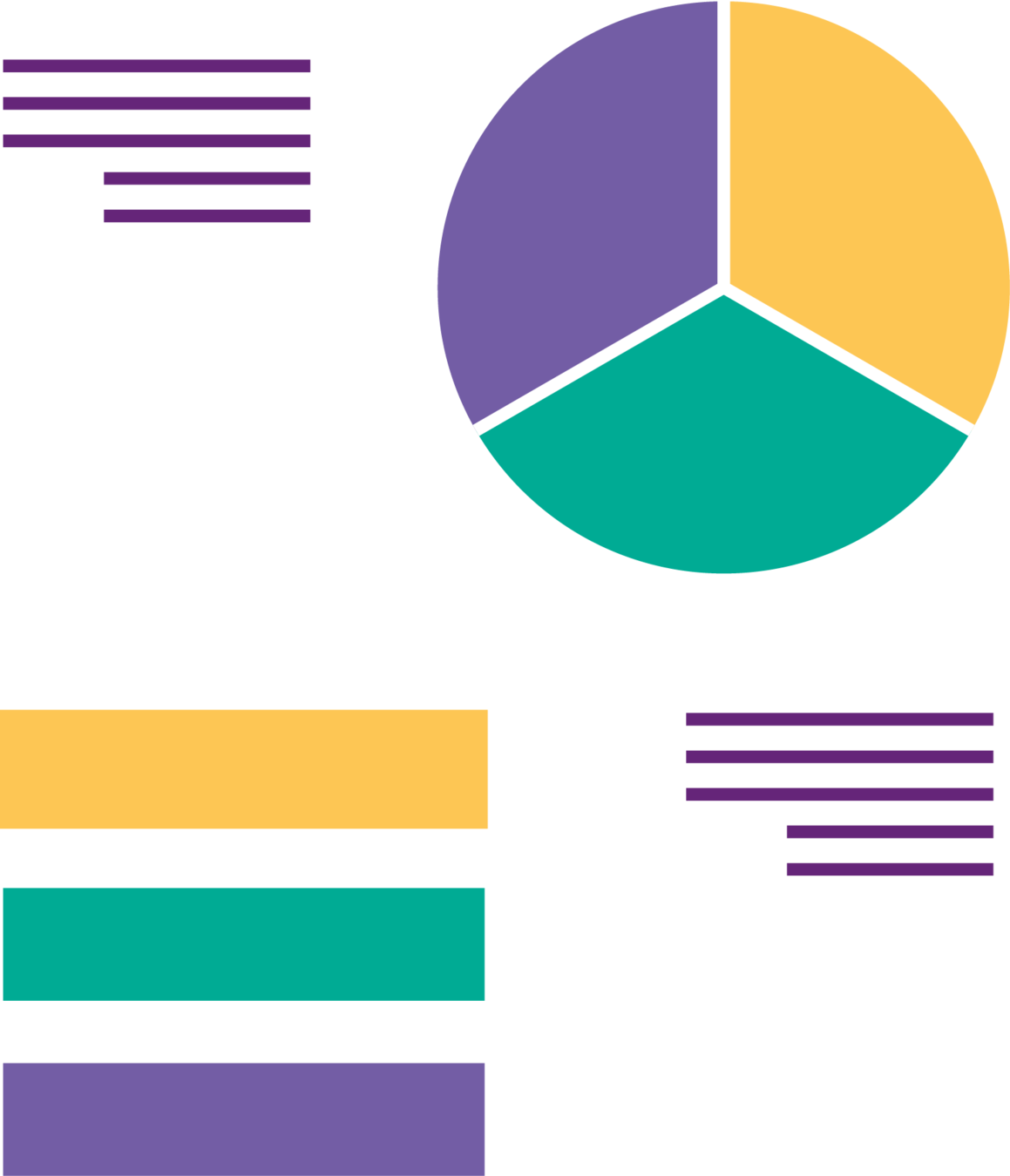

Prepare

1. Create an accessible point of information
To ensure the scheme is a success it must be advertised in a way that captures the attention of your chosen participant groups.
Having everything an applicant needs in one easy-to-find webpage not only helps potential participants
but will reduce the burden of responding to enquiries.
Two key documents are required to run a simple and efficient scheme:


1. A comprehensive guidance document with clear section headings outlining everything an applicant needs to know:
• Types of opportunity available/scope of the scheme
• Funding available
• Duration of the scheme / opportunity
• Key dates
• How to apply
• Assessment process
• Conditions of award
• Contact details.
2. A form that collects everything required to assess the application, report to funders on key metrics, and allow follow-up with all parties. The form should also be light touch and simple for the applicant – remember that the sums of money available might be quite small, and the application process should be proportionate.
• Biographical and contact details
• Secondee and organisation host (inc. letter of support)
• Applicant objectives and purpose of secondment
• Justification of funds.

Tip: Forms can be created online using tools like OnlineSurveys (BOS). If these are used, ensure applicants can see all questions so their responses can be prepared in advance.
Publicise

2. Planning audience-friendly channels
The scheme should be advertised in places that are likely to reach your intended applicants and participants. Consider:

Web news items and intranets
Social media
Events and meetings
Staff presentations
Partner channels

Publicise

3. Showcasing outputs
For schemes that are ongoing or run in more than one round, showcasing the outputs of earlier schemes will help prospective applicants to grasp the potential benefits of being involved. Consider:
Case studies
Blogs written by participants
Videos

Encouraging social media engagement
Support
A successful scheme will provide a high level of support to both applicants and hosts:
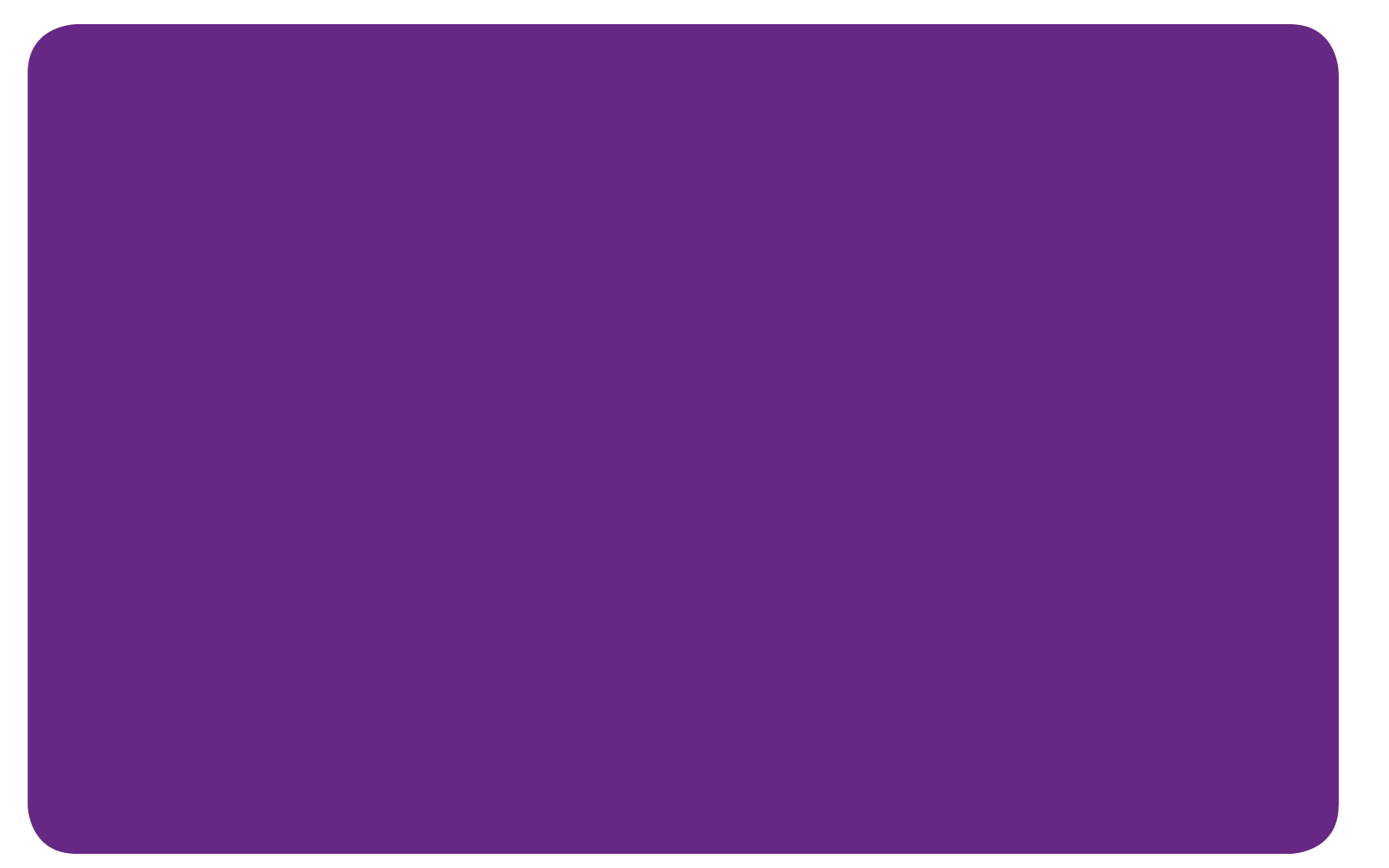






1
Prompt feedback
This helps potential participants to
ensure that their applications are in
scope and have clearly defined objectives.
You’ll also need to provide ongoing
support for secondees whilst they are
on their secondments, at least to answer
any questions.
2
Brokering relationships
There will be a large pool of prospective
applicants that want to spend time in a different setting to build their capabilities but who may not have a host organisation in mind.
As a KEC practitioner you can broker new relationships through the scheme.
3
Targeted opportunities
As a KEC practitioner you are likely to know some of the challenges your partner organisations face and where an academic expert could help.
By offering this as a specific opportunity – like a short term job advertisement – it can take some of the guesswork
out of scoping for many potential applicants. Short term secondments can also make a great introduction to Knowledge Transfer Partnerships.
“The best piece of advice I can
give to anyone considering a secondment is to ask members of staff for their ideas on potential secondment opportunities, including whether they think you would be suitable for one of the pre-organised secondment opportunities.”
James Warren, University of Leeds; seconded to Appleyard Lees
4
Post-secondment support
The secondment scheme will help you to identify promising technologies that as a KEC practitioner you can support going forward.
What are the next steps, are there any follow-on interventions you could facilitate or support?
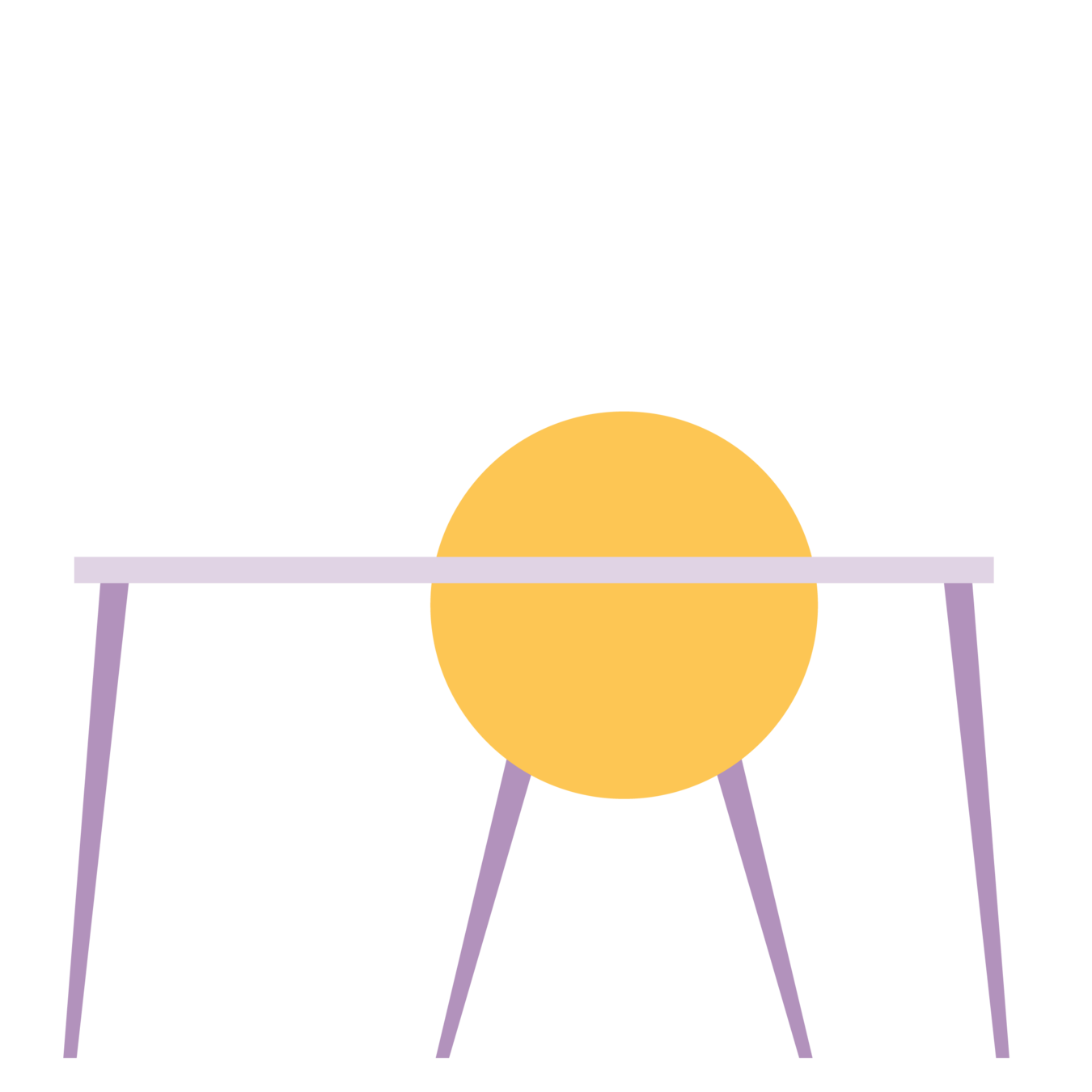

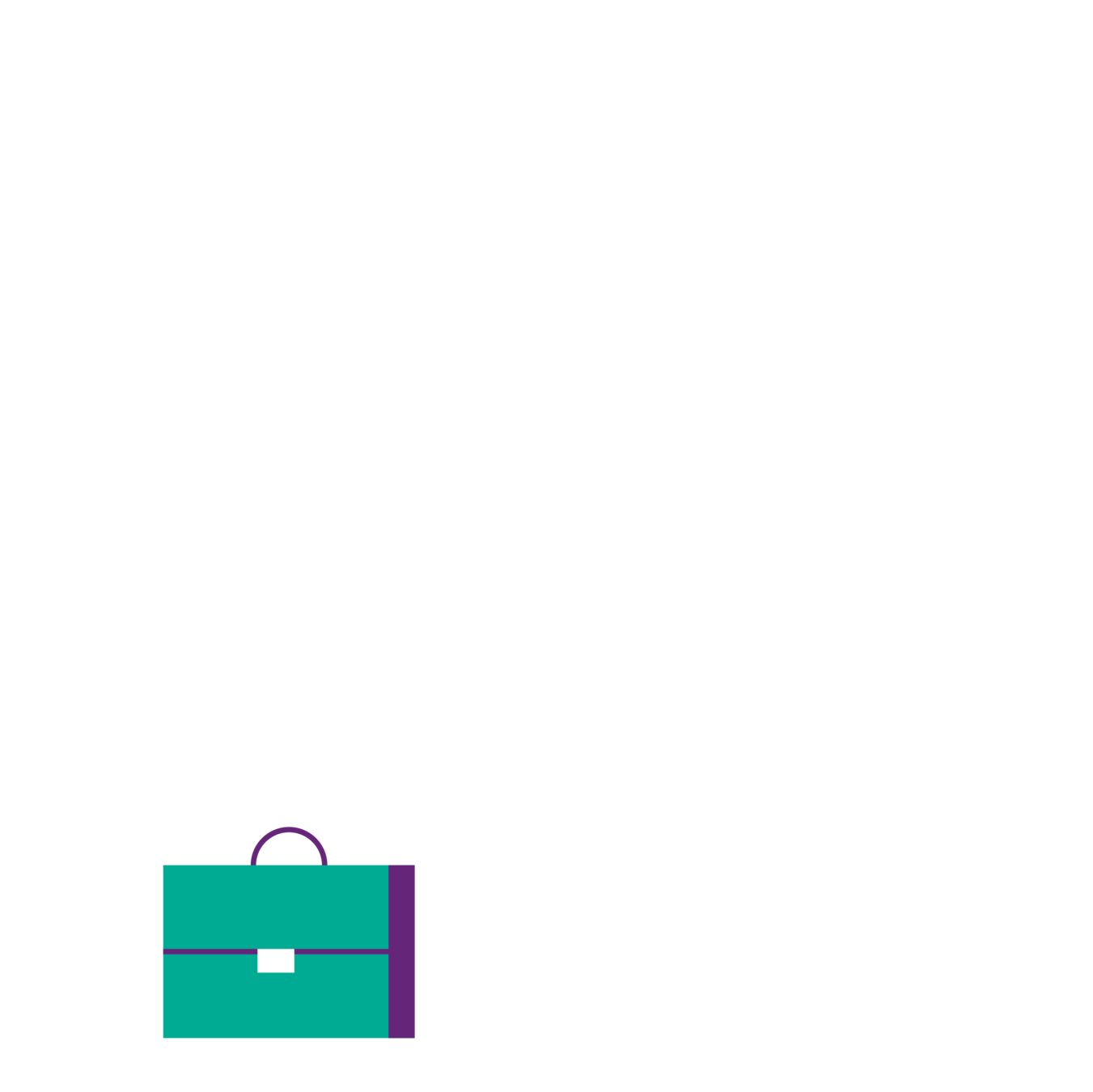

Evaluate
3. Showcasing outputs
Remember considering what ‘success’ for the scheme looks like (see slide 4)?
Evaluation of success needs to be monitored continually for ongoing improvement.
The best feedback comes from participants and hosts.

Tip:
Include a condition as part of the terms for funding that participants must produce a “communications friendly” report on their secondment.
It might include: writing blogs; creating videos; using a social media feed, etc.
This approach to the reporting process has three uses:
• As publicity about the scheme, highlighting success of the
scheme in first-person testimonials
• As a useful reflection tool on what participants wanted to
achieve, and have achieved
• As a monitoring tactic for KEC practitioners supporting
technology progression projects.

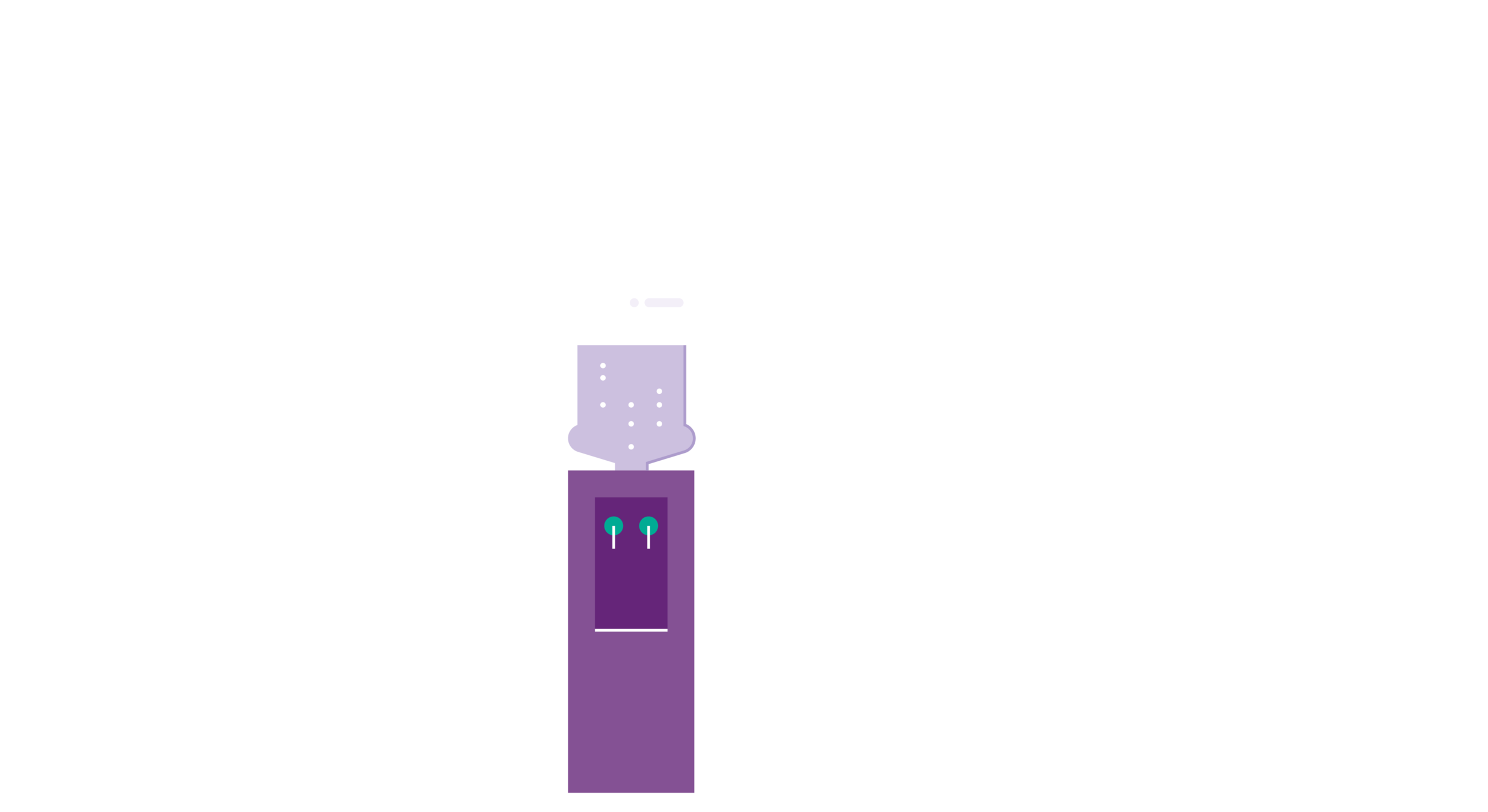


Translate:
Translate is a partnership between the universities of Leeds, Bradford, Huddersfield, Leeds Beckett and York that works to improve health and wealth by translating early-stage ideas into new medical technologies.
A successful secondment scheme case study
Funded by HEFCE (now Office for Students), the programme provides researchers at the partner universities with access to a dedicated innovation team experienced in progressing technologies
to market. It also provides a model for successful innovation, innovation training and development,
and collaboration within the higher education sector.
Translate aims to:
• identify and progress technology opportunities
• increase innovation capability among Leeds City Region academics
• foster and facilitate research that is better aligned to clinical, patient and public drivers.
The first phase of the Translate secondment scheme
was launched in October 2016. Our aims were:
1. To develop specific translational skills
2. To progress technologies towards clinical application


45 secondments
funded, through
4 open
calls and
a series of targeted opportunities.
Host organisations included:
Hospitals and
healthcare providers
supporting insight into
clinical needs
Industrial companies
and enterprises
providing appreciation of commercial priorities, market drivers, health economics, manufacturing constraints
Innovation teams
offering knowledge and
expertise in progressing
medical technology
opportunities
UK or international laboratories
providing training, access to equipment, and opportunities
to develop collaborations
Technology
intermediaries
including regulatory
bodies


Funding was available up to a
maximum of £2.5K to cover:
Secondments were up to a
maximum of three months duration
Travel
to and from the
host organisation
Accomodation
and subsistence costs for the duration of the secondment
with flexibility in terms of full or part-time, with several visits over
the duration. Many secondments used less than the full amount
of funding, meaning money could be stretched even further.
Applications were assessed using the criteria
Acquisition of new
knowledge and skills
Impact on career
development
Benefits for the host organisation
Development of new collaborations
Opportunities to progress
medical technologies towards commercialisation or
clinical application
Funding was available up to a
maximum of £2.5K to cover:
Secondments were up to a
maximum of three months duration
Travel
to and from the
host organisation
Accomodation
and subsistence costs for the duration of the secondment
with flexibility in terms of full or part-time, with several visits over
the duration. Many secondments used less than the full amount
of funding, meaning money could be stretched even further.

As a condition of award, candidates were required to:
Attend two Translate workshops
Write three blog posts about
their secondment for the
Translate website
Success of the Translate secondment scheme
45 secondments funded
Clinical 42.5%
Academic 30%
Industry 27.5%
Incoming 32.5%
Outgoing 67.5%
Female 62.5%
Male 37.5%
PhD Student 27.5%
Early Career Researcher 20%
Senior Lecturer 27.5%
Reader 20%
Professor 5%
Case Study
Dr Sareen Galbraith
Leeds Beckett University
Sareen is a molecular virologist
who leads the Neurological Infections and Disease Group at Leeds Beckett University, is developing glove sensors to monitor patients with neurological conditions such as Parkinson’s disease.
Viruses that infect the brain cause neurological symptoms very similar to Parkinson’s disease.
Although disease progression is inevitable, patients have six-monthly or annual neurology assessments to monitor their symptoms and adjust their treatments. This regime can be frustrating for patients and clinicians, because disease progression fluctuates and can be different in each patient.
Neurologists use motor skill tests for patient assessment, such as moving objects and drawing shapes. These skills can be measured regularly and remotely in the patient’s home using glove sensors, allowing clinicians to respond to patients’ needs more quickly.
A Translate secondment brought Dr Walied Mowafi, a consultant neurologist at Calderdale and Huddersfield NHS Foundation Trust, to Leeds Beckett to identify movement tasks to measure with glove sensors that could chart disease progression.
A second Translate secondment brought
Mr Sumit Sharma, Chief Medical Technology Officer at Axxonet System Technologies,
India, to Leeds Beckett to further develop
the glove sensors. The company, which has
a satellite base in Bradford, has manufactured the prototype ‘Clasp’ glove and is confident the resulting device could be manufactured inexpensively in the UK.
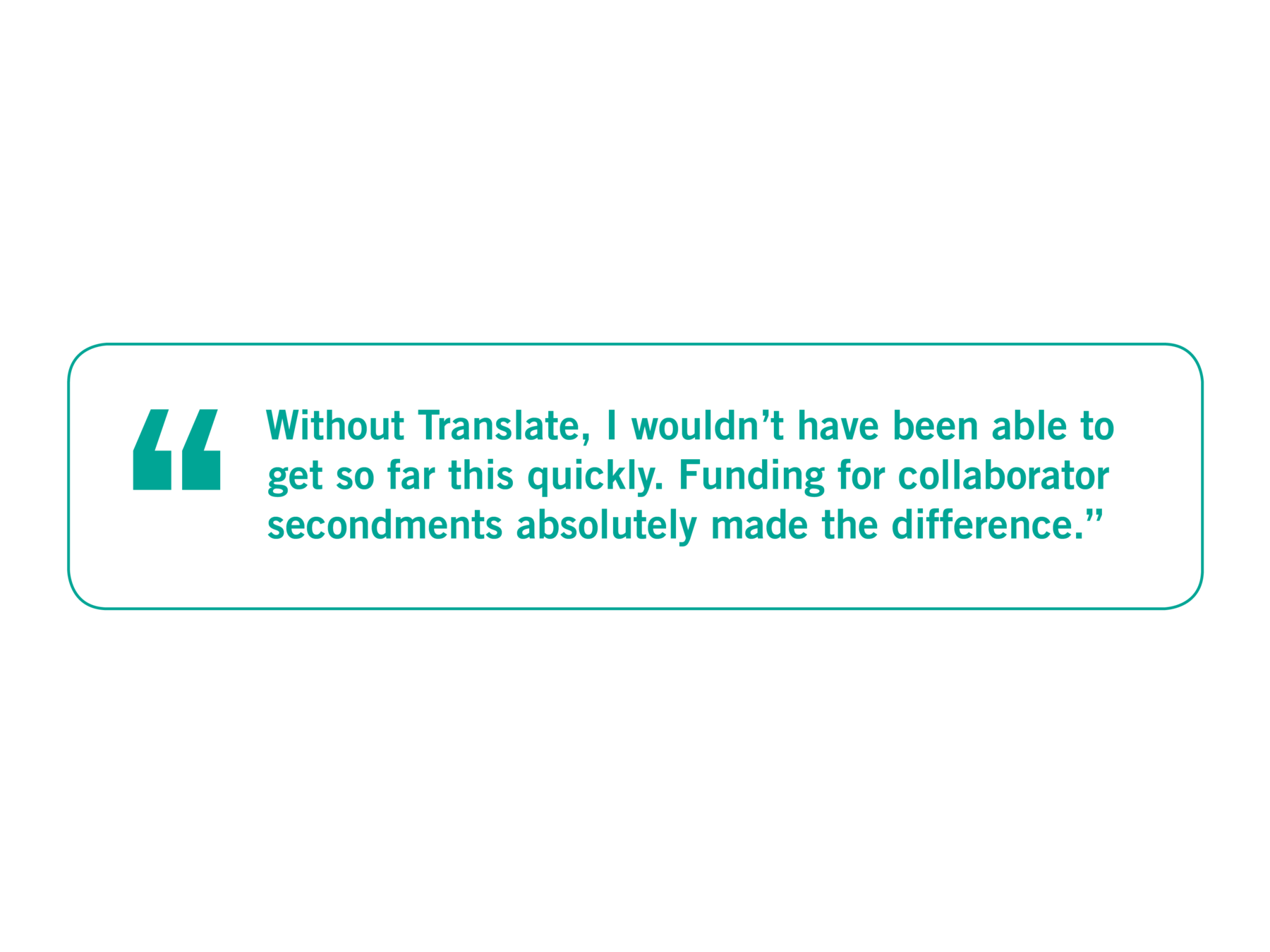
Case Study
Dr Elena Mancuso
University of Leeds
Elena is a biomedical engineer,
who is now Lecturer in Biomaterials at Ulster University. She has been developing an implantable device
to treat female patients with incontinence and related problems caused by pelvic organ prolapse.
Polypropylene mesh devices currently used
to treat this condition can cut into the tissues causing great pain and distress for some patients, so there is a real clinical need for improvement. Electrospinning technology can be used to create a softer textured material with structural and biomechanical properties that should integrate into host tissues better.
It is also possible to alter the fibre distribution to tailor the mesh for different clinical uses and incorporate antibacterial agents.
Realising her research would generate intellectual property, Elena Mancuso wanted to learn more about IP protection. She completed a three month secondment to NHS healthcare innovation hub, Medipex, in 2017 (brokered by Translate) – attending meetings with industry and NHS clinical teams, and helping to review and evaluate new product ideas.
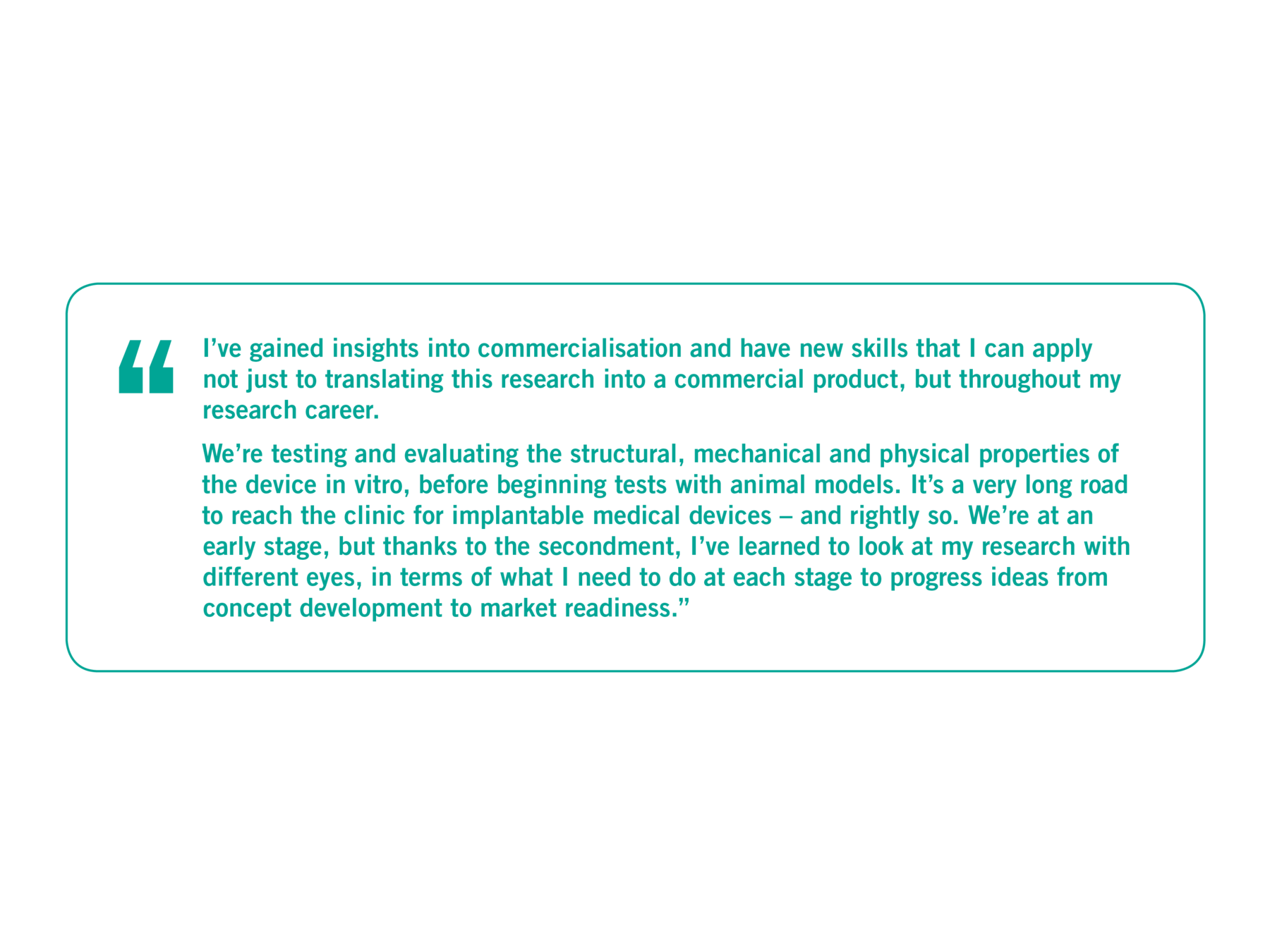
Case Study
Viswadeep Sarangi
University of York
Viswadeep is developing a medtech device that uses artificial intelligence (AI) and virtual reality to enhance and evaluate the rehabilitation of patients with impaired mobility caused by diseases such as Parkinson’s, osteoarthritis and stroke.
Patients affected by these diseases show certain subtle differences in the way they walk that can only be spotted by highly trained clinicians who are experts in analysing gait. These changes
can be used to both diagnose the patient and monitor their treatment.
Mobility problems can sometimes be reversed
if addressed early enough, but there are not enough experts in clinical gait analysis. Viswadeep Sarangi’s AI system aims to emulate how clinicians diagnose and assess their patients.
Viswadeep Sarangi went on secondment
to Addenbrooke’s Hospital to observe
and learn from the way doctors diagnose and monitor patients afflicted with gait-impairing diseases; and Florida Atlantic University’s Center for Complex Systems
& Brain Sciences, a recognised centre of excellence in machine learning, to refine and extend the artificial intelligence capabilities under development at York.
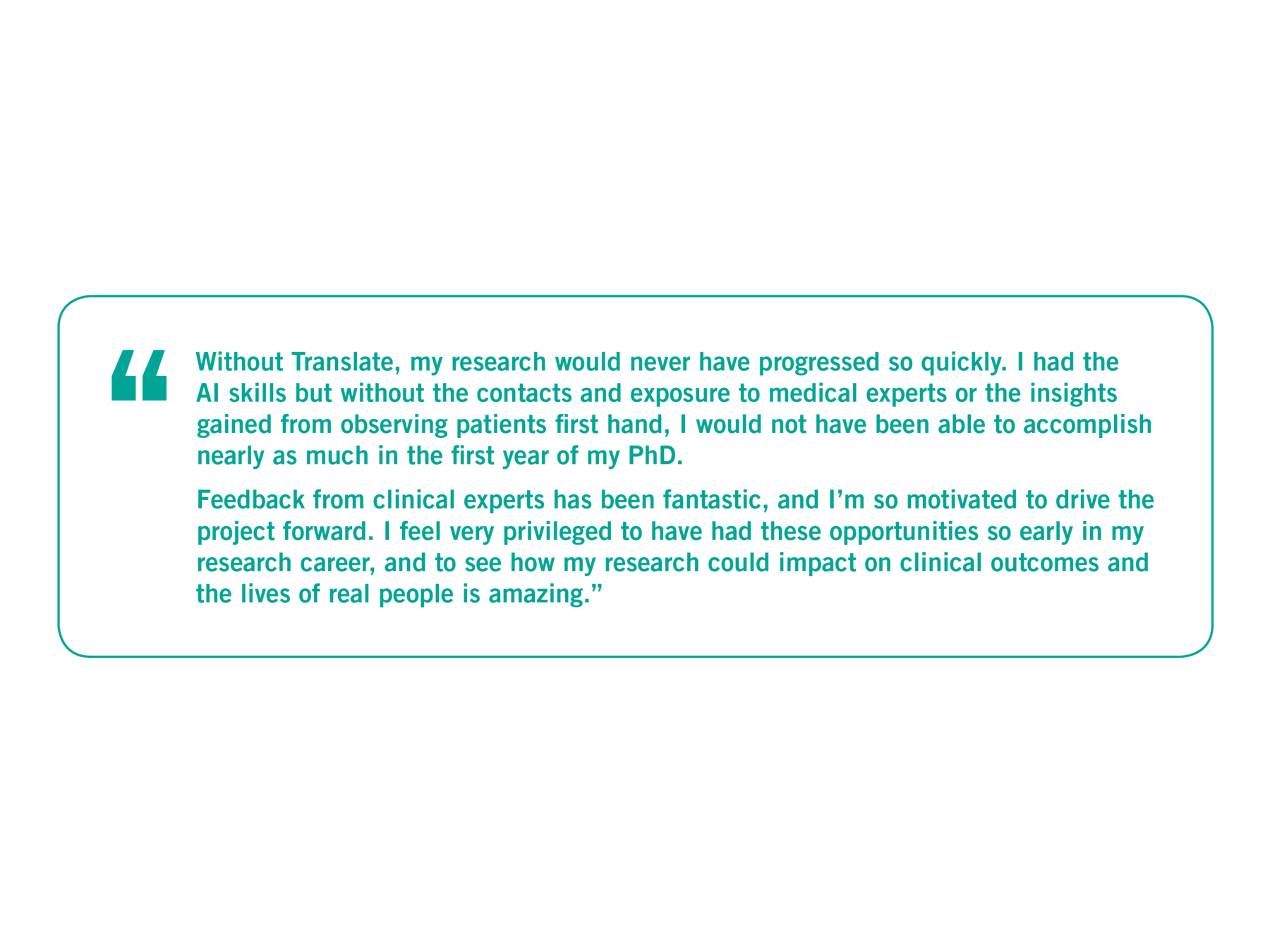
Case Study
Prof Stephen Smith
University of York
Steve’s spin-out company, ClearSky Medical Diagnostics, has developed a monitoring system that tracks the movement of people with Parkinson’s, using the information to fine tune patients’ treatment regimes.
ClearSky’s LID-Monitor has already been adopted by hospitals in Leeds and Harrogate. Through Translate,
Steve has also been able to develop a partnership with
Rui Jin Hospital in Shanghai, China.
Translate funded an incoming secondment for Dr Shengdi Chen, a consultant neurologist at the hospital to visit the
UK and explore how the LID-Monitor can be developed
for the Chinese market.
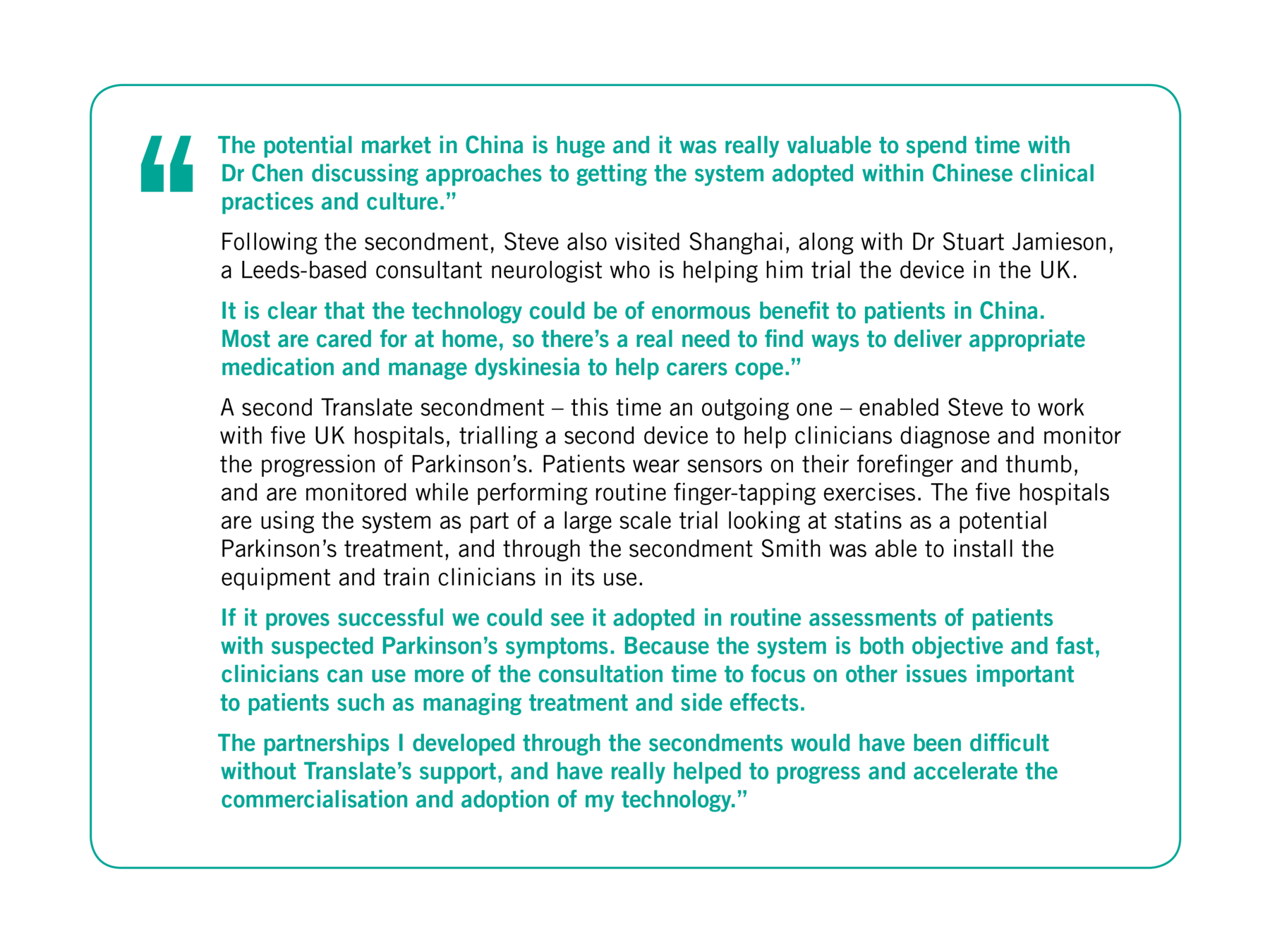
In terms of capability development, participates said they:
1. Expanded knowledge about the healthcare products innovation cycle and how to translate their research interests into a commercial solution.
2. Evaluated early stage projects, including everything from doing patent searches to understanding the market landscape where the innovation might fit.
3. Developed a broader understanding
of medical device development, different roles in laboratories including good practice in clean rooms and project management.
4. Learnt about how charity research is funded, including the application and selection processes for funding.

5. Learnt about intellectual property and
its application.
6. Learnt how to communicate more effectively with a range of audiences, including writing for non-academic audiences.
7. Developed a better understanding the general processes of translating research
into commercial projects across
a portfolio of products.
8. Gained insights into the role of an innovation officer, with a view to testing the water fora potential future career change.
Blogs: To read about more participants’ experiences, in their
own words, go to: http://www.translate-medtech.ac.uk/blog/

The successful secondment scheme toolkit
To help you to quickly set up your next scheme, download secondment scheme templates and forms from our website.
www.translate-medtech.ac.uk/case-studies/
big-innovation-small-budget
About Translate
Acknowledgements
Translate is a partnership between the universities of Leeds, Bradford, Huddersfield, Leeds Beckett and York that works to improve health and wealth by translating early-stage ideas into new medical technologies.
Funded by HEFCE, the programme provides researchers at the partner universities with access to a dedicated innovation team experienced in progressing technologies to market.
It also provides a model for successful innovation, innovation training
and development, and collaboration within the higher education sector.
Translate aims to:
– identify and progress technology opportunities
– increase innovation capability among Leeds City Region academics
– foster and facilitate research that is better aligned to clinical, patient
and public drivers.
Translate team
Dr Josephine Dixon Hardy
Director of Medical
Technologies Innovation
Dr Lisa Hill
Innovation Development Manager
Dr Danielle Miles
Technology Innovation Manager
Dr Sean Clarkson
Technology Innovation Manager
Rowan Grant
Communications and Engagement Manager, Author of this Good
Practice Guide
Translate Innovation Development
Management Group
Dr Barry Timmins
University of Huddersfield
Dr Ged Hall
University of Leeds
Dr Geoff Whitely
University of York
Dr John Steele
University of Bradford
Dr Karen Clegg
University of York
Dr Nat Milton
Leeds Beckett University
Prof Stephen Smith
University of York
Dr Graeme Howling
Medical Technologies IKC
Kirstie Frenneaux
Leeds Beckett University
Dr Jim Walsh
University of York
Additional partners
HEFCE
Office for students
Peter West Associates



